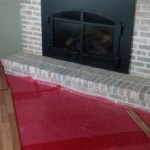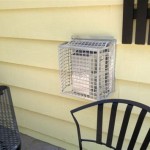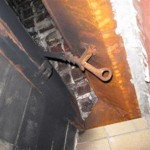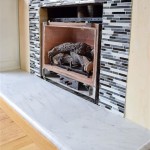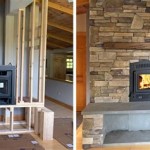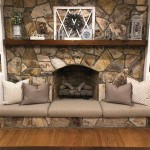Cast Stone Fireplace Mantels America: Elegance and Durability for American Homes
Cast stone fireplace mantels represent a significant investment in both the aesthetic appeal and the structural value of a home. In America, these mantels are increasingly popular due to their versatility, durability, and the timeless elegance they bring to living spaces. This article delves into the world of cast stone fireplace mantels, exploring their composition, manufacturing process, design possibilities, benefits, installation considerations, and the factors driving their growing popularity in the American market.
Cast stone, often mistaken for natural stone, is a manufactured material that mimics the appearance, texture, and properties of various natural stones like limestone, granite, and marble. It's composed primarily of cement, aggregates (such as sand and crushed stone), pigments, and admixtures. These components are carefully mixed and cast into molds to create a wide array of shapes, sizes, and intricate designs. The resulting material offers a cost-effective alternative to natural stone while providing comparable aesthetic and structural benefits.
The allure of a fireplace as a focal point in a home endures. While modern heating systems have diminished the fireplace's primary functional purpose, its symbolic and aesthetic significance remains strong. A cast stone mantel elevates the fireplace from a simple heat source to a statement piece, enhancing the overall ambiance of the room and providing a visual anchor for interior design.
Understanding the Composition and Manufacturing of Cast Stone Mantels
The quality and appearance of a cast stone mantel hinge significantly on the precise formulation of the cast stone mix and the meticulousness of the manufacturing process. The cement used ideally is a high-quality Portland cement, known for its strength, durability, and consistent color. Aggregates, chosen for their size, shape, and color, contribute to the cast stone's texture and visual appeal. Pigments, either natural or synthetic, are carefully selected to achieve the desired color and shade, ensuring the mantel complements the surrounding décor.
Admixtures play a crucial role in enhancing the properties of the cast stone. Water-reducing admixtures improve workability and reduce the water-to-cement ratio, resulting in a denser, stronger material. Air-entraining admixtures improve freeze-thaw resistance, crucial in regions with harsh climates. Accelerators and retarders are used to control the setting time of the concrete, ensuring proper curing and preventing cracking.
The manufacturing process typically involves creating detailed molds based on the desired design. These molds can be made from various materials, including fiberglass, rubber, and polyurethane. The prepared cast stone mix is then poured or packed into the molds, ensuring complete filling of all intricate details. Vibration is often used to remove air bubbles and consolidate the mixture, resulting in a denser, more uniform product. After the cast stone has hardened, it is carefully demolded and subjected to a curing process, which involves maintaining a controlled temperature and humidity to promote proper hydration of the cement.
Finally, the cured cast stone mantel undergoes finishing processes, such as sandblasting, acid etching, or honing, to achieve the desired surface texture and appearance. Any imperfections are carefully addressed, and a sealant may be applied to protect the mantel from staining and weathering.
The Design Versatility and Aesthetic Appeal of Cast Stone Mantels
One of the primary advantages of cast stone is its design versatility. It can be molded into virtually any shape, size, and style, allowing homeowners to create a fireplace mantel that perfectly complements their architectural style and personal preferences. From classic and ornate designs inspired by historical periods to sleek and minimalist modern styles, cast stone can be tailored to fit any aesthetic vision.
The color and texture of cast stone mantels are also highly customizable. Manufacturers can match a wide range of natural stone colors, allowing homeowners to achieve the desired look without the expense and limitations of sourcing natural stone. The surface texture can be smooth and polished, rough and rustic, or anything in between, adding another layer of customization.
Furthermore, cast stone allows for the incorporation of intricate details and decorative elements. Carvings, reliefs, and other embellishments can be seamlessly integrated into the mantel design, creating a unique and personalized statement piece. This level of detail is often difficult or impossible to achieve with other fireplace mantel materials.
The modular nature of cast stone also allows for easy assembly and installation. Mantels can be designed in multiple pieces, making them easier to transport and handle. This is particularly beneficial for larger mantels or those with complex designs. The joints between the pieces can be seamlessly filled and finished, creating a cohesive and visually appealing final product.
The availability of various finishes further enhances the aesthetic appeal. Antiquing techniques can be applied to create a weathered, aged look, adding character and charm to the mantel. Alternatively, sealant coatings can provide a protective layer against wear and tear, prolonging the mantel's lifespan.
The Benefits and Advantages of Choosing Cast Stone for Fireplace Mantels
Compared to natural stone, cast stone offers several compelling advantages. One of the most significant is its cost-effectiveness. Cast stone is typically less expensive than natural stone, while still providing a similar aesthetic and structural integrity. This makes it an attractive option for homeowners looking to achieve a high-end look without breaking the bank.
Durability is another key advantage. Cast stone is a strong and resilient material that can withstand the rigors of daily use and environmental exposure. It is resistant to cracking, chipping, and fading, ensuring that the mantel will maintain its beauty and structural integrity for many years to come. Furthermore, cast stone is fire-resistant, providing an added layer of safety in the event of a fireplace malfunction.
Consistency is another benefit. Natural stone can vary significantly in color, texture, and quality, even within the same quarry. Cast stone, on the other hand, is manufactured under controlled conditions, ensuring consistent color, texture, and strength throughout the mantel. This consistency simplifies the design process and ensures that the final product meets the homeowner's expectations.
Cast stone is also environmentally friendly. It is made from readily available materials and requires less energy to produce than natural stone. Furthermore, cast stone manufacturers often use recycled materials in their mixes, further reducing their environmental impact.
Maintenance is another consideration. Cast stone mantels are relatively easy to maintain. Regular cleaning with mild soap and water is typically sufficient to keep them looking their best. Sealing the mantel can provide additional protection against staining and weathering.
The availability of a wide range of styles and designs is a significant plus. Whether a homeowner is looking for a classic, contemporary, or rustic mantel, cast stone can be customized to meet their specific needs and preferences.
Installation is generally straightforward, especially when compared to the complexities often associated with installing large pieces of natural stone. The modular design of many cast stone mantels simplifies the installation process, reducing labor costs and minimizing the risk of damage.
Finally, the enhanced property control is a major advantage. Cast stone's composition can be carefully controlled to achieve specific performance characteristics, such as increased strength or improved weather resistance. This allows manufacturers to tailor the material to meet the specific requirements of different applications.
In summary, the combination of cost-effectiveness, durability, design versatility, environmental friendliness, and ease of maintenance makes cast stone fireplace mantels a compelling choice for homeowners seeking to enhance the beauty and value of their homes.

Conrad Cast Stone Fireplace Mantel Old World Stoneworks

Newport Cast Stone Fireplace Surround Oregon Castings And Design

Amhurst Cast Stone Fireplace Mantels Old World Stoneworks

Verona Cast Stone Fireplace Surround Oregon Castings And Design

Cast Stone Fireplaces So Much Better With Age

Manhattan Cast Stone Fireplace Mantel Old World Stoneworks

Whitmoore Cast Stone Fireplace Mantels Old World Stoneworks

Contemporary Cast Stone Fireplace Mantel

Loft Cast Stone Fireplace Mantels Old World Stoneworks

Custom Mantels Ut Stone Mountain Castings Design
Related Posts

